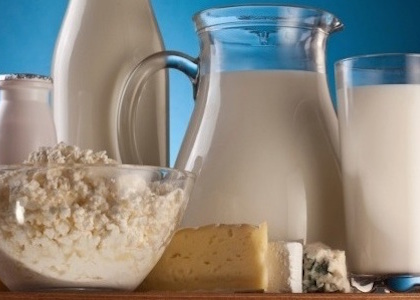
Is Dairy Making You Sick?
By Claire Georgiou, Reboot Naturopath, B.HSc ND
Problems digesting dairy products can occur at any age from birth to old age and cause a wide range of symptoms. Here is a run through on the different types of dairy allergies and intolerances.
Lactose Intolerance is the inability to digest lactose, a sugar found in milk and other dairy products. Lactose intolerant individuals have insufficient levels of lactase, the enzyme that metabolizes lactose, in their digestive system. In most cases this causes symptoms such as bloating, cramps, flatulence, diarrhea, nausea and/or vomiting. Symptoms of lactose intolerance can range from mild to severe, depending on how much lactase your body makes.
Culturally, some societies suffer with lactose intolerance more than others. African and Asian cultures are more likely to have less lactase production then northern Europeans who have higher levels, on average, of persistent lactase production.
You can develop lactose intolerance later in life because the amount of lactase our body produces naturally decreases as we age.
Left untreated, problems with malabsorption, such as iron deficiency and osteoporosis can occur on a longer term basis.
Tests to help diagnose lactose intolerance include: Enteroscopy, Lactose-hydrogen breath test, Lactose tolerance test, Stool pH.
A Dairy Allergy is a food allergy, an adverse immune reaction to one or more of the constituents of milk from any animal, the immune system produces an allergic antibody called immunoglobulin E (IgE) antibody. The reaction occurs within minutes to 2 hours after eating dairy products. The most common allergy is to the protein from cow’s milk – alpha S1-casein. This milk-induced allergic reaction can involve anaphylaxis, a potentially life-threatening condition. Other symptoms can be hives, eczema, allergic conjunctivitis, nausea, pain, vomiting, diarrhoea, wheezing, asthma and runny nose. Tests for a dairy allergy are skin prick tests or blood allergen specific IgE [RAST] tests.
An interesting study showed that infants up to 2 years of age that were born via caesarean section have an increased risk of developing a dairy allergy. The maternal age of the mother (>35) also seem to show an increase prevalence in dairy allergies. Food allergies were affected by a wide range of factors that are hypothesized to play a role in the development of food allergy including allergic family history, obstetrical practices, pre- and post-natal environmental exposures.
A Dairy Intolerance is considered more of a sensitivity to the proteins found in dairy products. This may cause symptoms to occur immediately (few minutes), or the symptoms can occur a few hours and up to a few days later, this is called a delayed reaction. Dairy protein intolerance produces a non-IgE antibody and is not detected by allergy blood tests. Dairy protein intolerance produces a range of symptoms very similar to dairy allergy symptoms, but can also include blood and/or mucus in the stool. The symptoms can vary and will affect the respiratory, gastrointestinal and dermatological systems, these can be bloating, nausea, constipation, diarrhea, indigestion, constant runny nose, blocked nose, constant cough, recurrent sinus infections and chest infections, skin conditions such as eczema, hives or acne, headaches and tiredness. Sufferers may only have one or several of these symptoms. Some people may only be slightly intolerant and may need to limit their intake while others may feel better when they avoid dairy 100%.
Some people may be intolerant to cow’s milk but they suffer no symptoms with goat and sheep’s dairy while some people may feel better with complete avoidance of all dairy containing foods.
To test a dairy intolerance it is best to eliminate for at least 2 weeks then you can reintroduce dairy and observe any symptoms that you may have suspected are caused from dairy. It is best to keep a diet diary to determine any reactions.
A Reboot is an excellent time to avoid any possible suspected food allergens including dairy products. You can use this time to observe any health changes or improvements; I highly recommend keeping a journal of any symptoms before, during and after a Reboot. Believe it or not people often forget about how they feel before and during a detox program. After the initial week following the Reboot you may re-introduce dairy, you can then journal any symptoms that you may experience during the re-introduction of dairy products.
Dairy Alternatives after the Reboot
• Butter and spreads – nut butter, hummus, tahini, babaganoush, avocado
• Milk – Almond, Soy, Oat, Rice, Hazelnut, Hemp, Quinoa or Coconut milks
• Yogurt – coconut yogurt
Non-dairy calcium rich food sources include: almonds, chickpeas, tofu, seaweeds, tahini (unhulled has a higher calcium content), sardines, salmon (with the bones), dried figs, rhubarb, perch, chinese cabbage, broccoli and dark green leafy vegetables like kale.